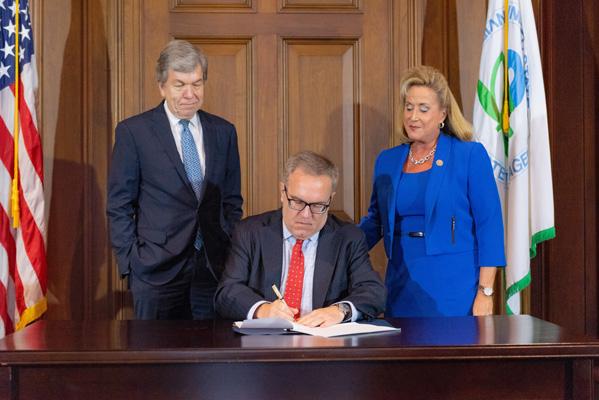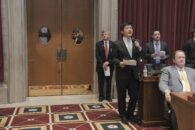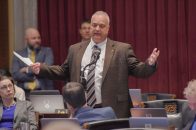ST. LOUIS — A majority of the nuclear waste illegally dumped at the West Lake Landfill will be dug up, while the remaining waste will be capped under a final decision made on Thursday.
The U.S. Environmental Protection Agency has made the decision to move roughly 70 percent of the nuclear waste to an off-site, out-of-state location. The plan is expected to be carried out of four years and cost $205 million — the owner of the landfill and parties deemed responsible for the contamination will fund the cleanup.
EPA Acting Administrator Andrew Wheeler signed the Record of Decision Amendment for the West Lake Landfill Superfund Site in Bridgeton, Missouri, on Thursday.
“EPA made a commitment to the people of Missouri to finalize a cleanup plan for the West Lake Landfill Superfund site, and today we are delivering on that commitment,” said Wheeler. “The improvements we’ve made in our final remedy will speed up construction time by a year and reduce exposure to the community and cleanup workers while still removing virtually the same total amount of radioactivity.”
“Since I became regional administrator, the West Lake Landfill has been my top priority,” said EPA Region 7 Administrator Jim Gulliford. “Today’s announcement is a significant milestone for the Bridgeton community, but work remains. We will continue our focus on the West Lake Landfill until remedy implementation is complete.”
The EPA said the West Lake remedy addresses all of the radioactive material that could pose “unacceptable risks” to public health.
The Record of Decision Amendment requires excavation of radiologically impacted material greater than 52.9 picocuries per gram generally down to a depth of 12 feet. The remedy also calls for an optimization during remediation design which will identify certain areas for continued excavation beyond 12 feet down to as deep as 20 feet. It also will identify limited instances of isolated pockets of RIM at concentrations greater than 52.9 picocuries per gram between 8 and 12 feet to remain in place.
The plan will move about 70 percent of the landfill’s radioactive waste to an out-of-state disposal site, which has not been determined. A cover will be placed over the remaining radioactive material.
A preliminary proposal announced in February was similar, but this one will cost $30 million less and will shorten construction time by a year.
Bridgeton Landfill, LLC will share the cost of the project with the U.S. Department of Energy and Cotter Corporation.
Bridgeton Landfill said in a statement that the company opposes “the selected excavation remedy because it creates unacceptable risk with no proportional benefit, will greatly increase the time needed to remediate the site, and is contrary to EPA’s own findings regarding the risks posed by the site.”
The statement went on to call the EPA’s decision “arbitrary and capricious.”
The nuclear waste, remnants from the Manhattan Project, was illegally dumped on the 200 acres that make up the West Lake Landfill in the 1970s.
The EPA said 8,700 tons of radioactive leached barium sulfate residues from the nuclear bomb program was mixed with 39,000 tons of potentially contaminated surface soil in 1973, long before Republic Services became the owner.
The EPA placed the site on the National Priorities List in 1990.

Alisha Shurr was a reporter for The Missouri Times and The Missouri Times Magazine. She joined The Missouri Times in January 2018 after working as a copy editor for her hometown newspaper in Southern Oregon. Alisha is a graduate of Kansas State University.














